Motorola has established itself pretty well when it comes to budget smartphones, however, the company has been losing its market share due to value-for-money offerings from Chinese brands. To counter them, the company has launched the Motorola One Vision smartphone.
The phone features a modern design and upgraded camera specs on paper. It comes at a time when the competition is at all-time high and biggest smartphone brands such as Samsung are reworking their strategy for the mid-range segment, Motorola has also stepped up its game.
While it looks good on paper, how does the Motorola One Vision fare in the real world and is the price tag justified? Let’s find out in this review.
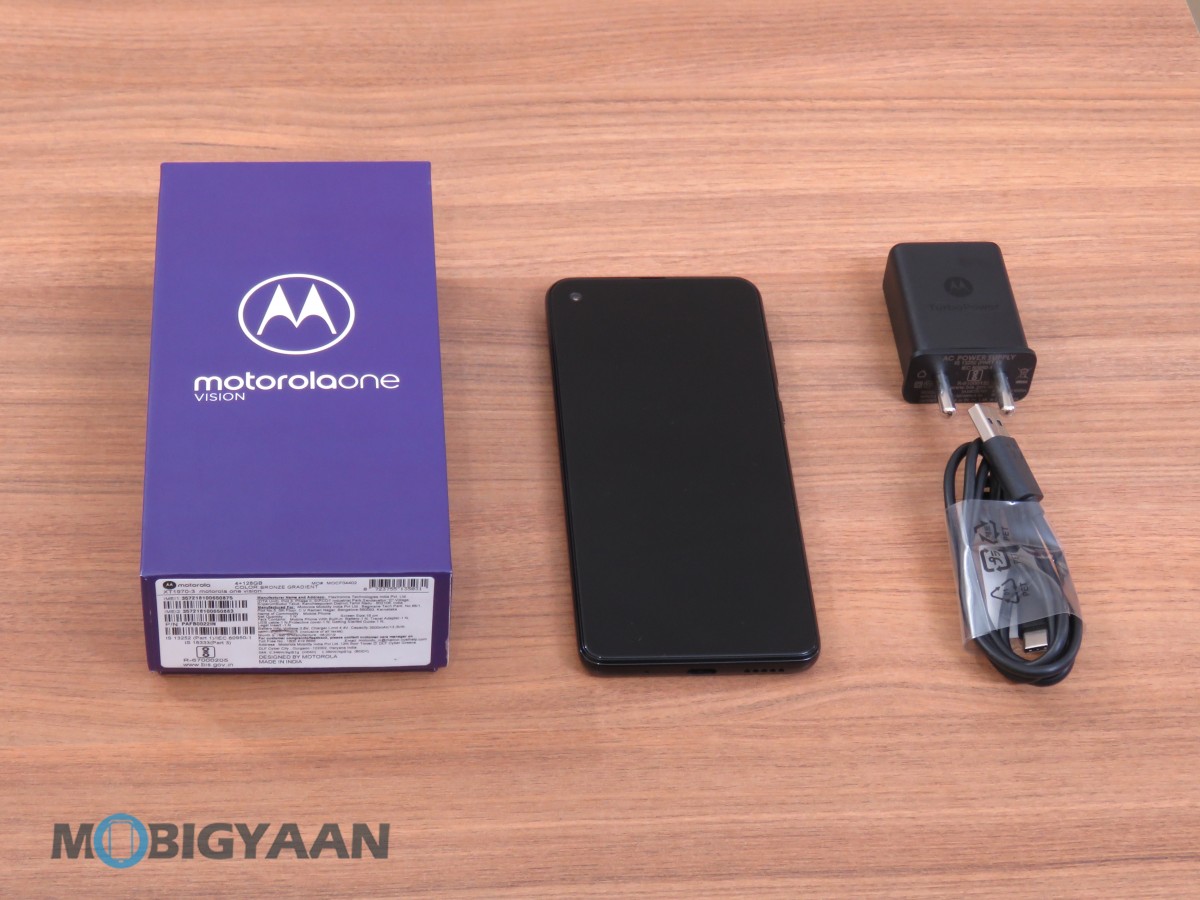
What’s in the box:
- Motorola One Vision handset
- TurboPower 15W wall adaptor
- Data/Charging cable
- User manual and safety documents
Motorola One Vision Specifications
- CPU: 2.2 GHz Samsung Exynos 9609 octa-core processor
- RAM: 4 GB
- Operating System: Android 9 Pie
- Display: 6.3-inch FHD+ CinemaVision display with 1080 x 2520 pixels screen resolution and a taller 21:9 aspect ratio
- Rear Camera: 48 MP f/1.7 Quad Pixel camera with OIS + 5 MP f/2.2 depth sensor
- Front Camera:25 MP f/2.0 quad pixel camera sensor
- Internal Storage: 128 GB
- Connectivity: Dual SIM, 4G VoLTE, Wi-Fi 802.11 b/g/n/ac, NFC, Bluetooth 5.0, USB Type-C port, and a 3.5mm audio jack
- Other: Fingerprint Scanner, Android One
- Battery: 3500 mAh with TurboPower fast charging
Design
The smartphone is quite taller compared to other phones as it comes with a 21:9 aspect ratio, which is pretty rare as most devices offer 19:9 aspect ratio. Even with a taller design, the phone is quite handy and you can hold it in your hands normally.
The bezels around the display on the front side are quite narrow, thanks to the punch-hole camera design. Motorola has picked up the trend and is now placing the selfie camera sensor in the display cut-out. However, the punch-hole camera in the top-left corner is the biggest we’ve seen so far and frankly, is distracting and doesn’t look good.
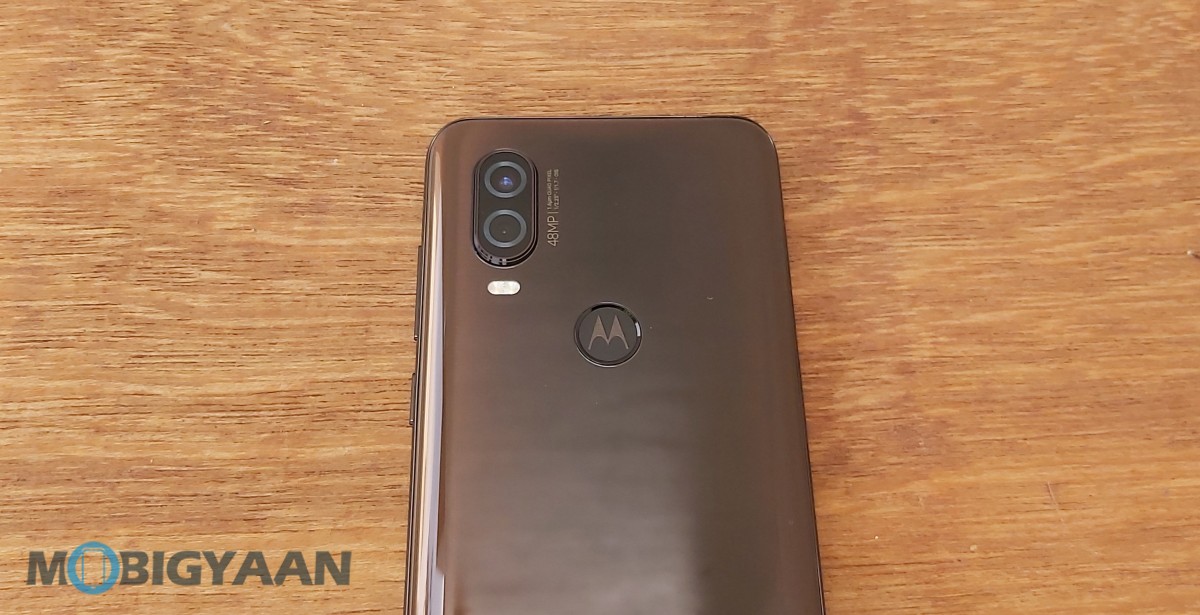
On the backside, along with the camera module which is placed in the top-left corner with sensors arranged vertically, there’s also a fingerprint sensor embedded in the Motorola logo. It is recessed nicely so you can easily find it and use it.
There’s a SIM card tray on the left side, which can also accommodate a MicroSD card in trade for dual SIM functionality. At the bottom, there’s a USB Type-C port and a speaker grille while the 3.5mm headphone jack sits at the top. The power button and the volume rocker keys are placed on the right side.
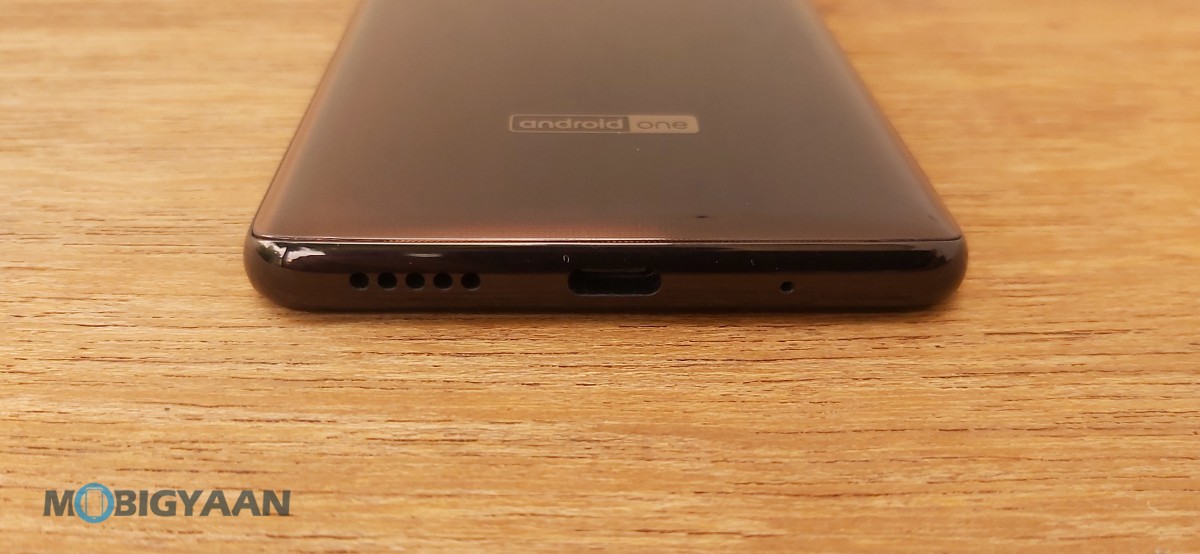

The smartphone is offered in two color options — Sapphire Gradient and Bronze Gradient. Our review unit came in Bronze Gradient color. Overall, the phone looks pretty decent and with the taller form factor, it stands out from the crowd. Whether that’s a good thing or a bad thing rests upon your preference.
Display
- 6.3-inch IPS LCD display
- 2,520 x 1,080 pixels resolution offering 432ppi
- 21:9 aspect ratio
- Punch-hole design for housing selfie camera
The Motorola One Vision features a 6.3-inch “CinemaVision” display which sounds quite big but it is quite easy to handle. As said, it comes with a 21:9 aspect ratio, making the display bit narrower but you can easily work through it.
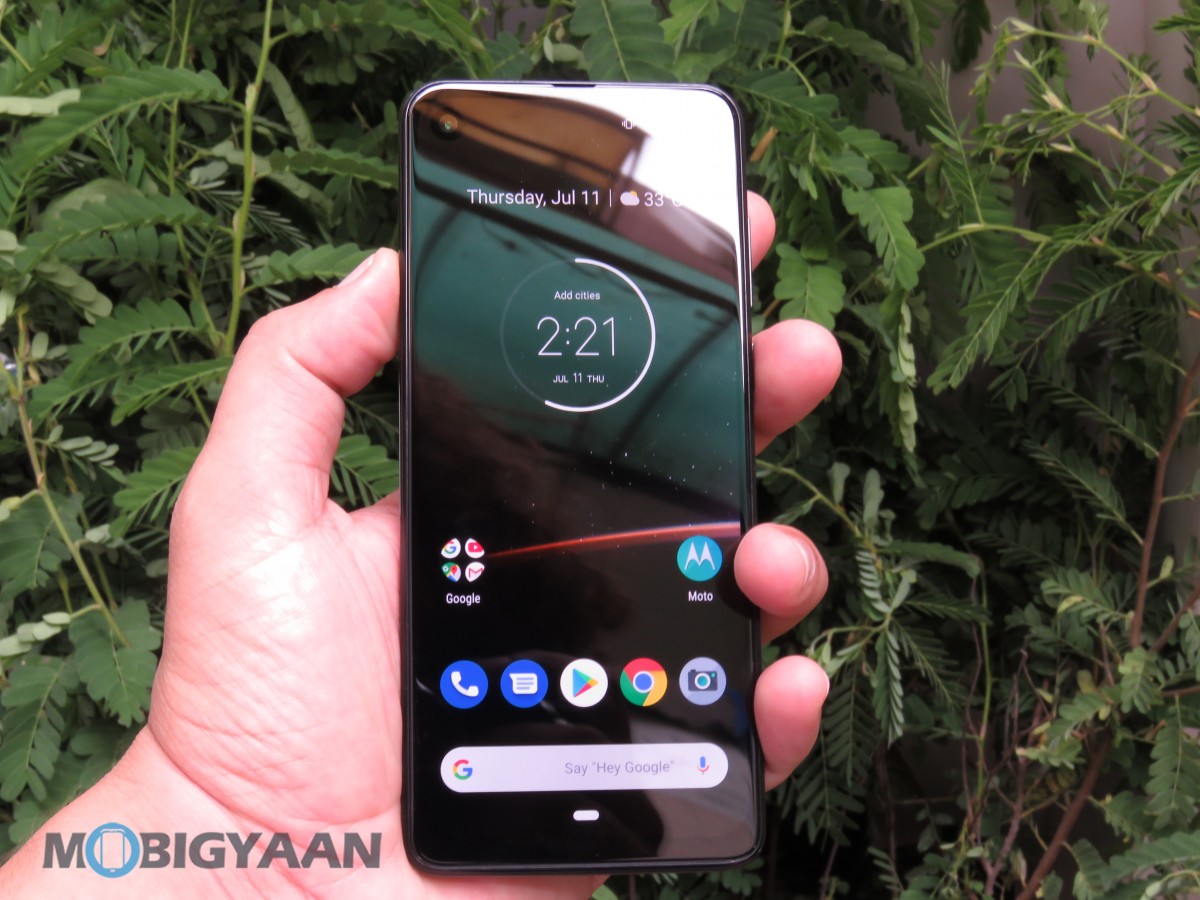
It offers a screen resolution of 2520 x 1080 pixels and always-on display even though the screen is not AMOLED. However, the screen is quite bright and the color pop-up really good.
While the 21:9 aspect ratio is made for the media consumption, there aren’t many contents available for such wide format and most of the time, you’ll end up losing your screen space to the ugly black bars when watching videos.
The display is a major improvement compared to the 720p offering in the Motorola One and it offers 432ppi pixel density which is fairly high. Overall, the display is decent and provides a satisfactory experience.
Performance
- Samsung Exynos 9609 Octa-core processor
- Mali-G72 MP3 GPU
- 4 GB of RAM
- 128 GB of storage
Surprisingly, Motorola ditched the Qualcomm chipset for this one and has instead opted for a Samsung processor. It comes powered by the Samsung Exynos 9609, which isn’t powering any of the Samsung phones.
Looking at the benchmark result, the performance is better than many Snapdragon 630-powered smartphones. The performance of the Exynos 9609 can be compared to that of Huawei’s Kirin 710 SoC.
During our usage, we did not come across any lag stutters in daily usage. Our activities include heavy multitasking, web browsing, occasional gaming, among others. The performance was also good while playing games like PUBG Mobile.
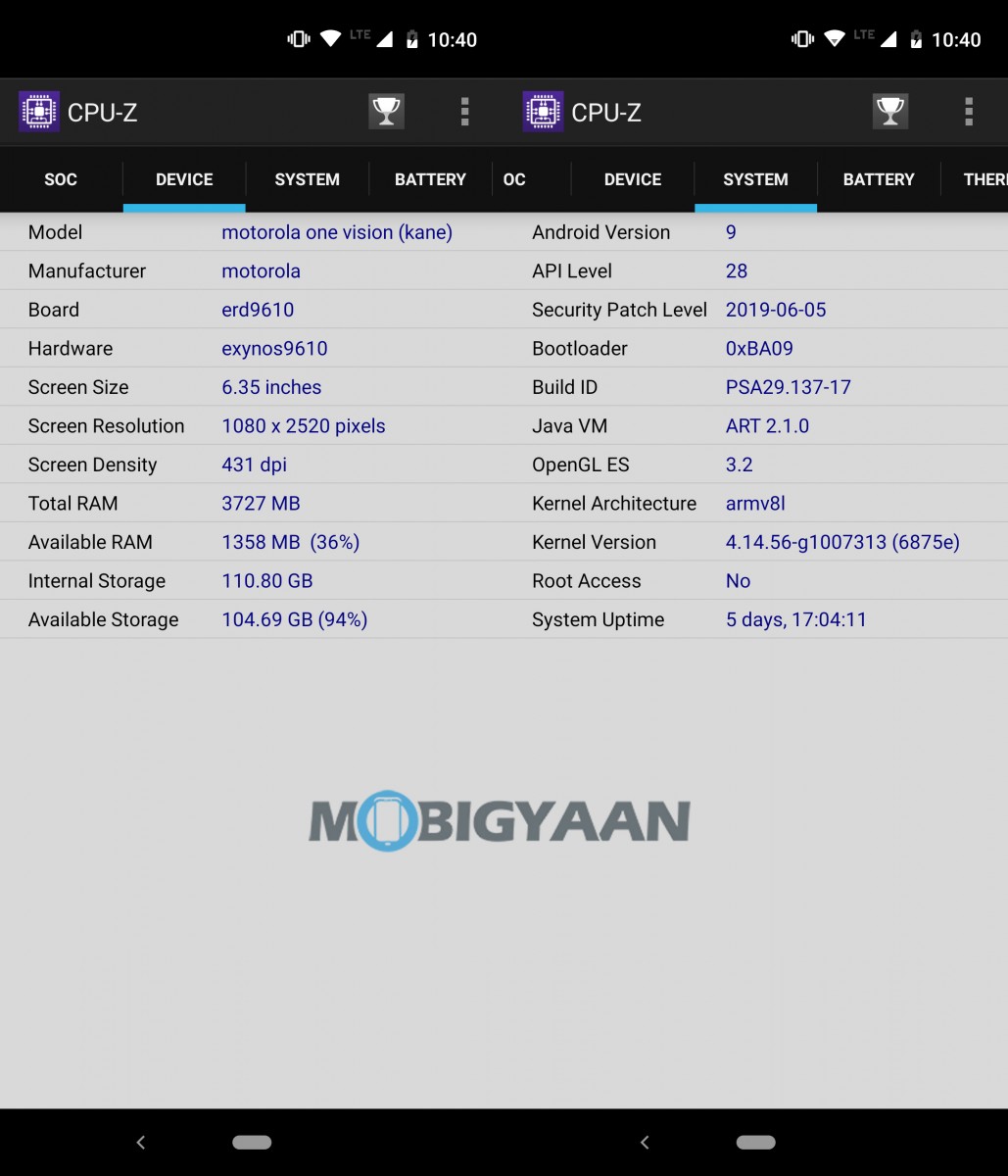
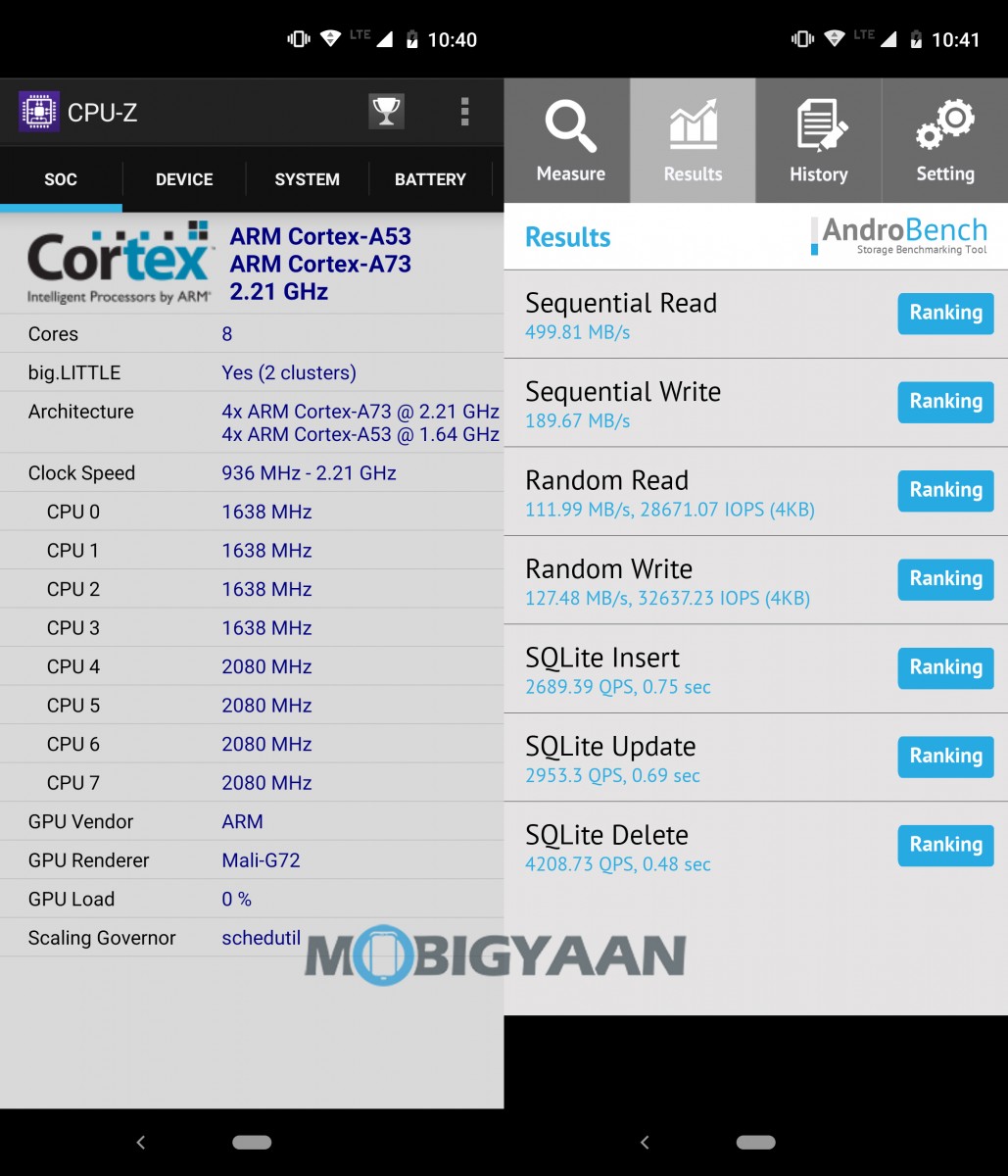
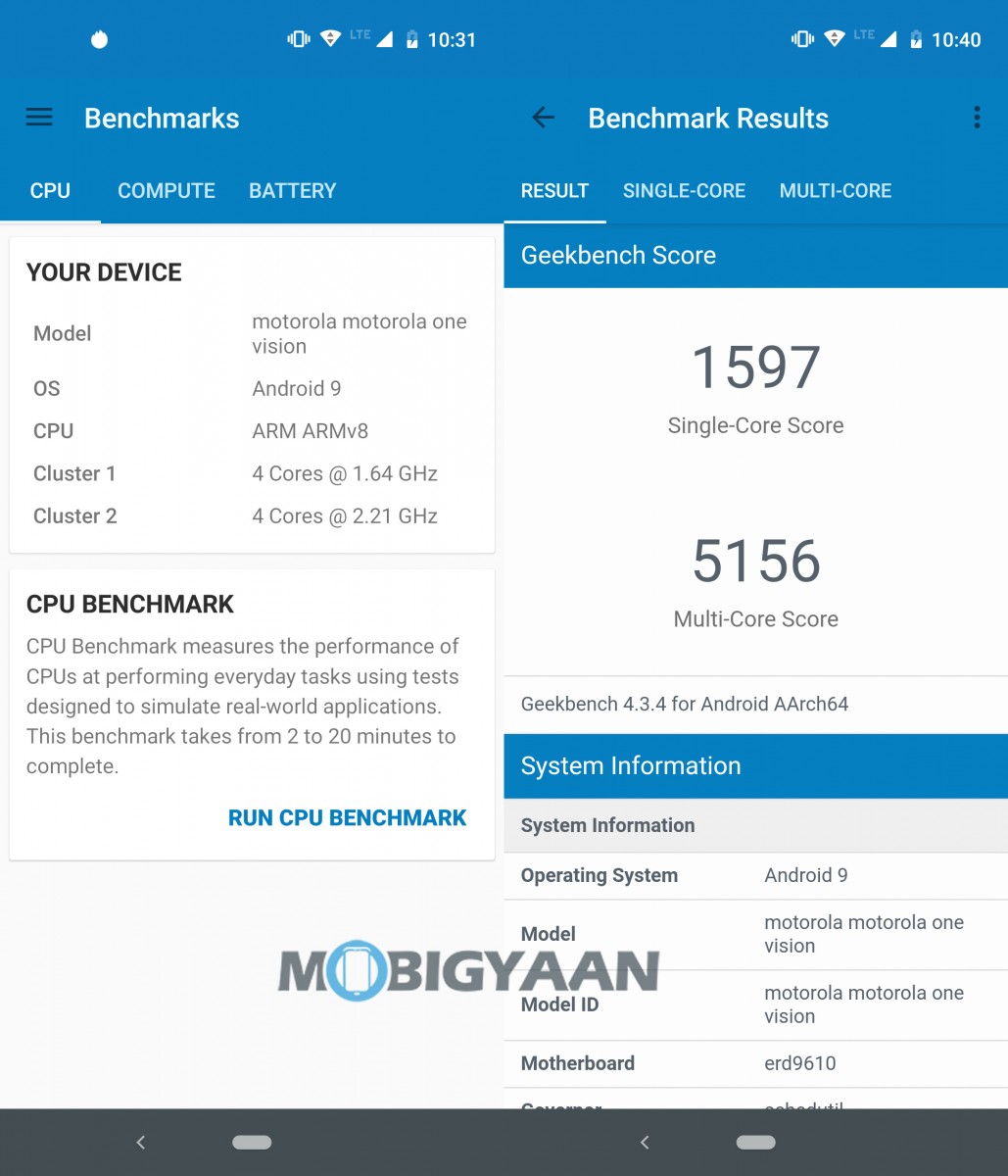
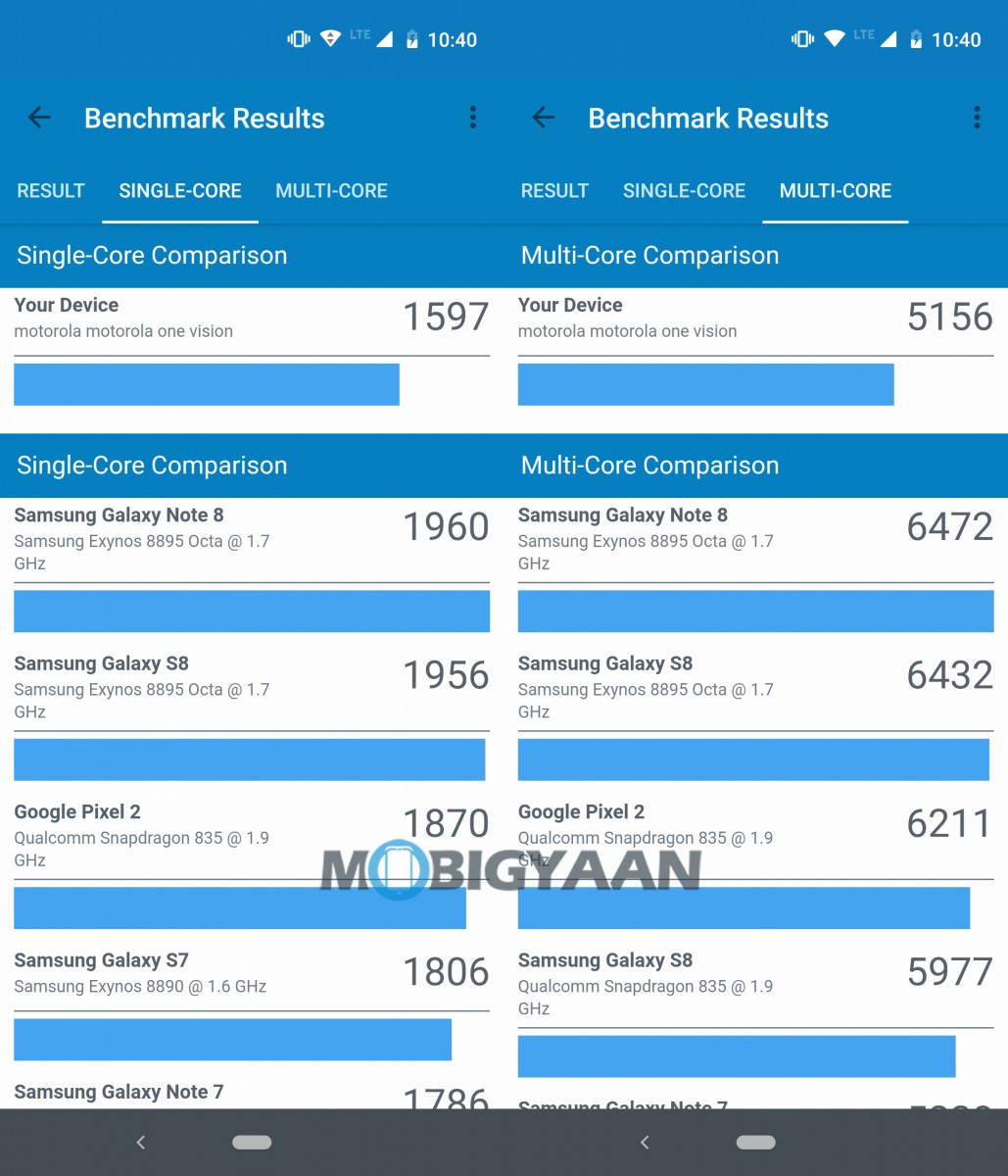
As for the benchmark results, the Motorola One Vision scored 1,597 points in the single-core test and 5,156 points in the multi-core test.
While the phone isn’t the best performer in this segment and won’t set any records, it will definitely not let you down. The phone’s performance is quite good even during the heavy usage and you won’t be facing any issues during daily usage.
Camera
- Rear:
- 48 MP primary sensor with f/1.7 aperture, OIS, and PDAF
- 5 MP depth sensor with f/2.2 aperture
- Front:
- 25 MP snapper with f/2.0 aperture
The smartphone comes with a dual-camera setup on the back panel, consisting of a 48 MP primary sensor with f/1.7 aperture and a 5 MP secondary sensor with f/2.2 aperture.
The 48 MP is a Samsung GW1 sensor, so you are not actually getting 48 MP images. The phone uses pixel binning technology which Motorola is dubbing as “Quad Pixel” technology. It combines four pixels into a single, larger 1.6μm pixel, resulting in 12 MP images for better details and colors.
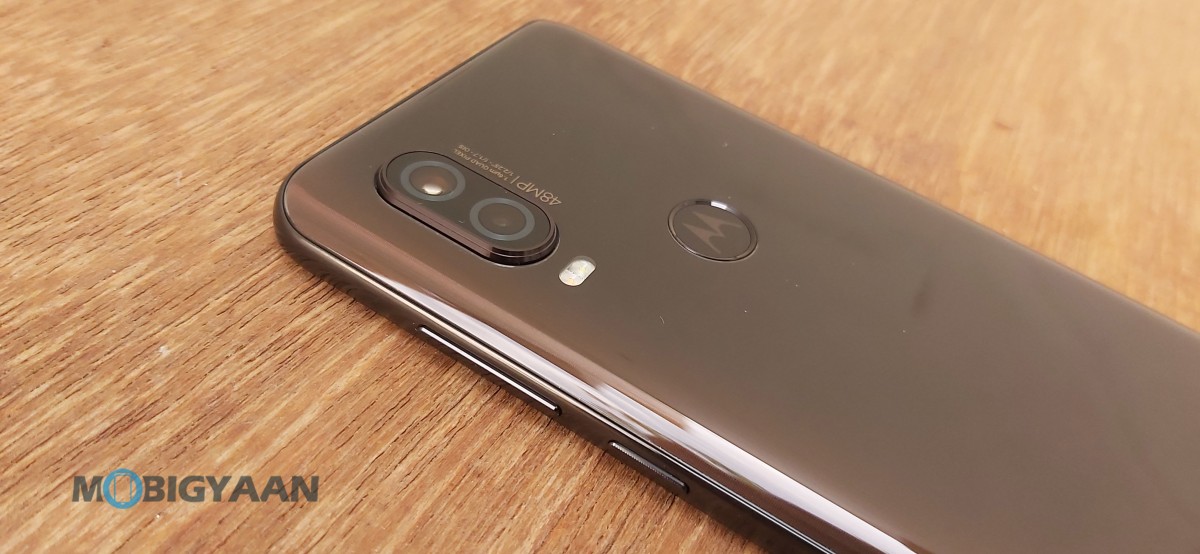
The camera performance is quite good with shots being detailed and color-rich. However, sometimes, the images turn out to be a little over-saturated. Usually, the phone is capable of providing some great images in daylight.
It offers a solid dynamic range and colors are usually pretty good. During low-light, noise starts creeping in but it isn’t terrible and still provides good results. For better low-light photography, it comes with a Night Vision mode, which is good but not much impressive.
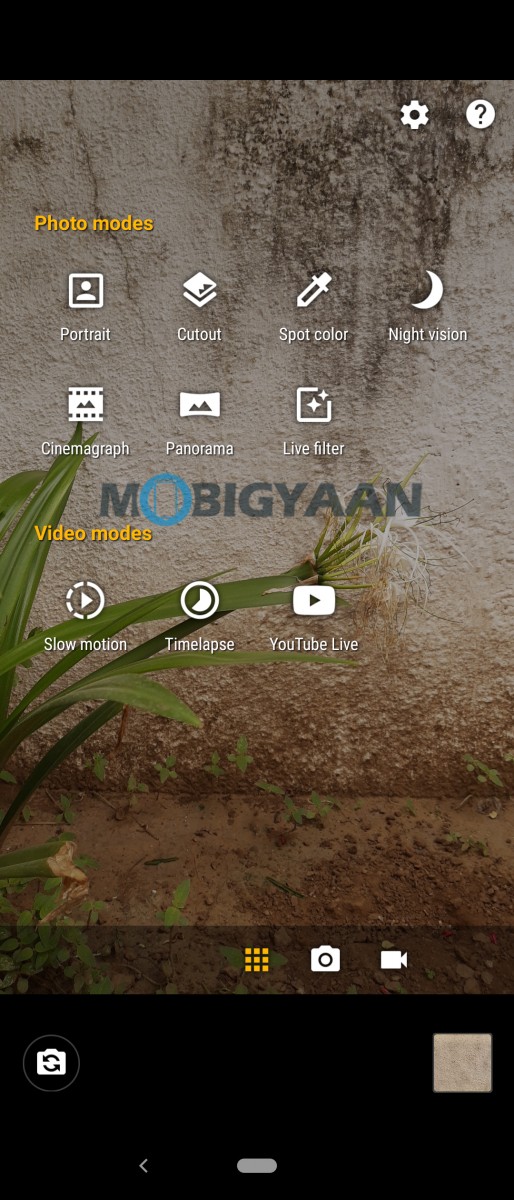
The Portrait Mode offers a good amount of blur and the images have good bokeh effect. Like most other smartphones, this one too comes with AI technology with features like Smart Composition, Auto Smile Capture, and Shot Optimization.
On the front side, the phone comes with a 25 MP camera sensor which brings the shots down to 6 MP with pixel binning technology. The images taken using the front camera are good and packed with details. It also offers various beauty and portrait mode to tweak it.
Overall, the camera performance is quite good and for regular users, there’s nothing much to complain about. If you are a selfie fan, this could be the phone for you.
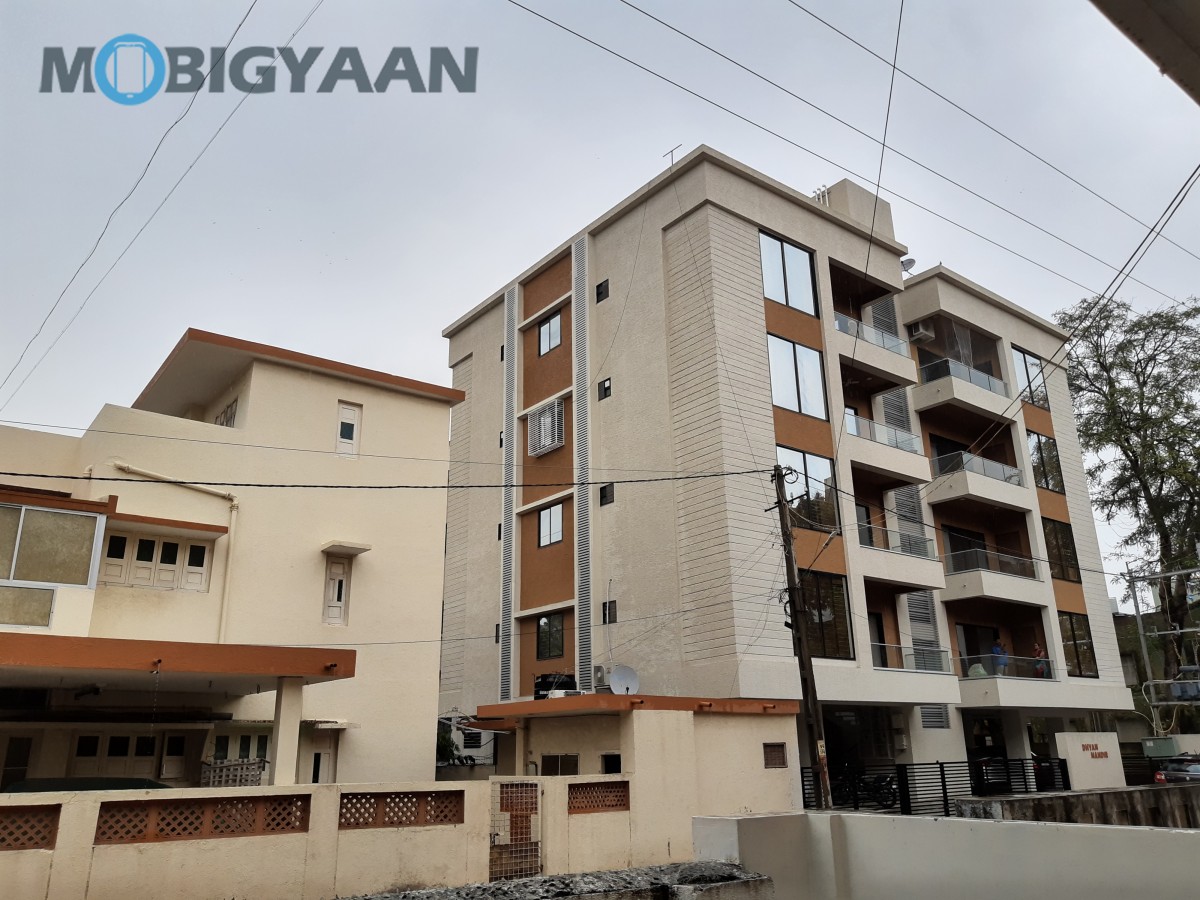
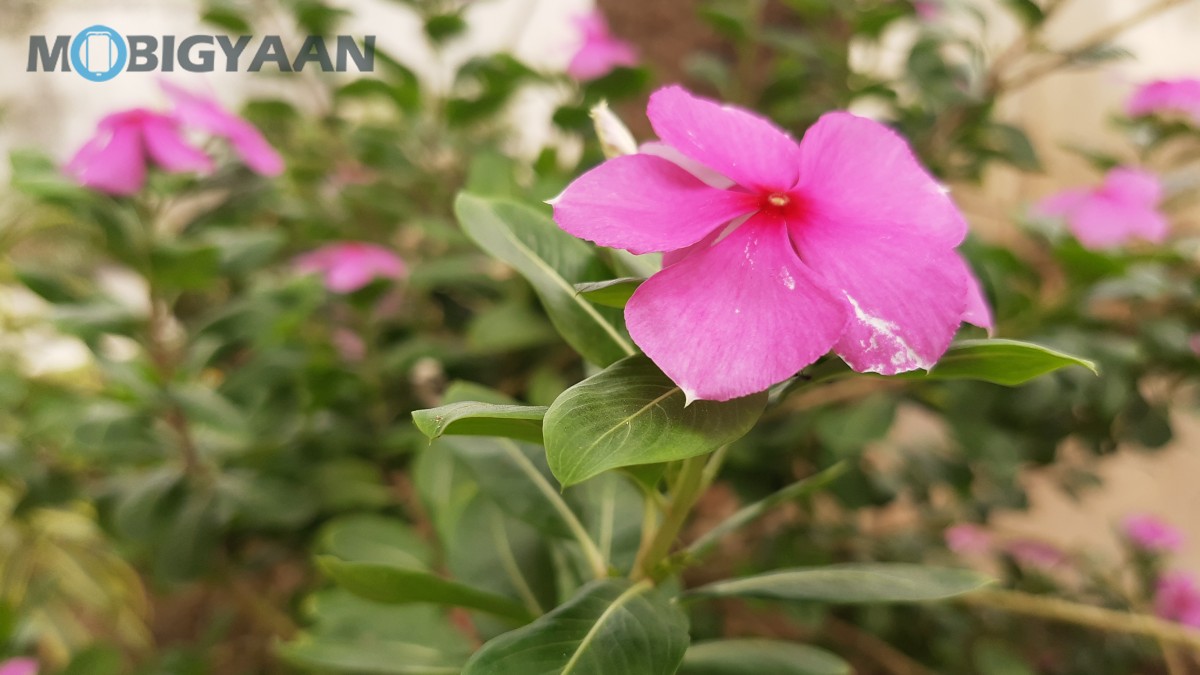

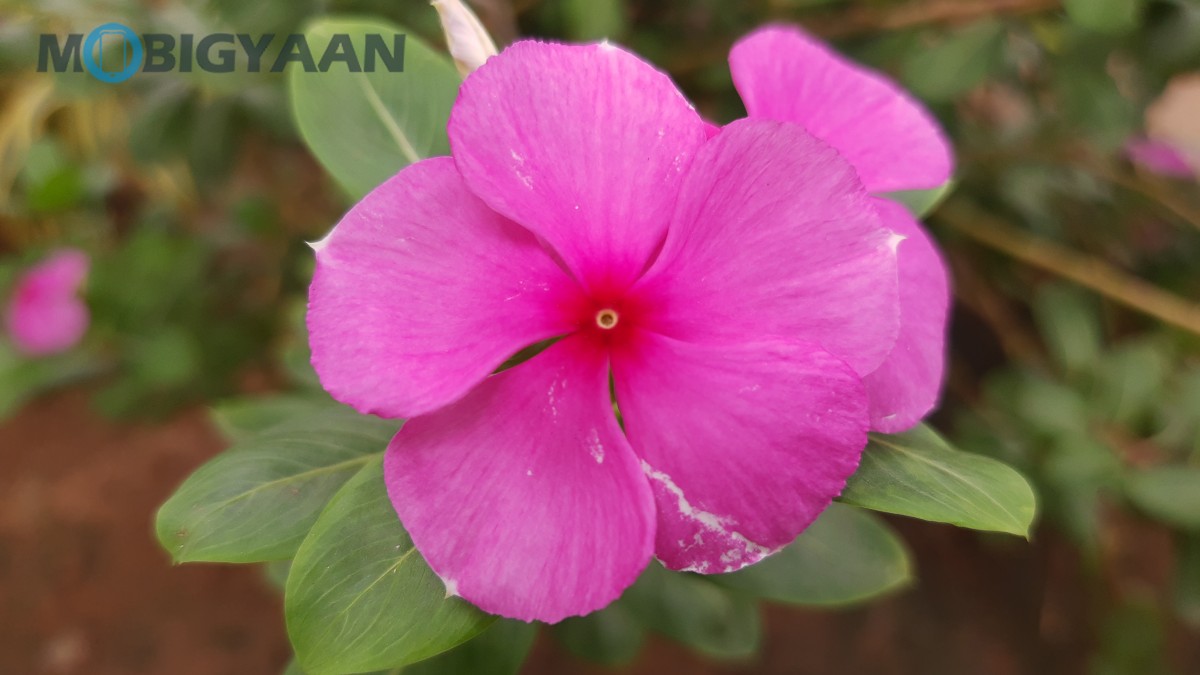
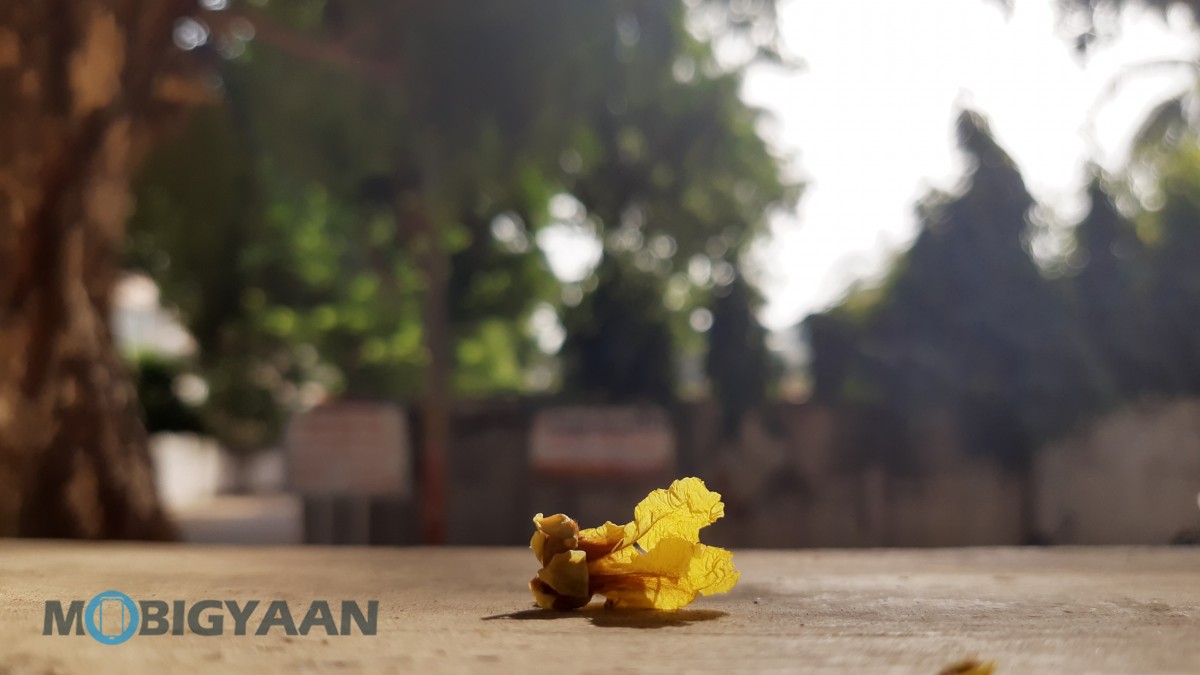
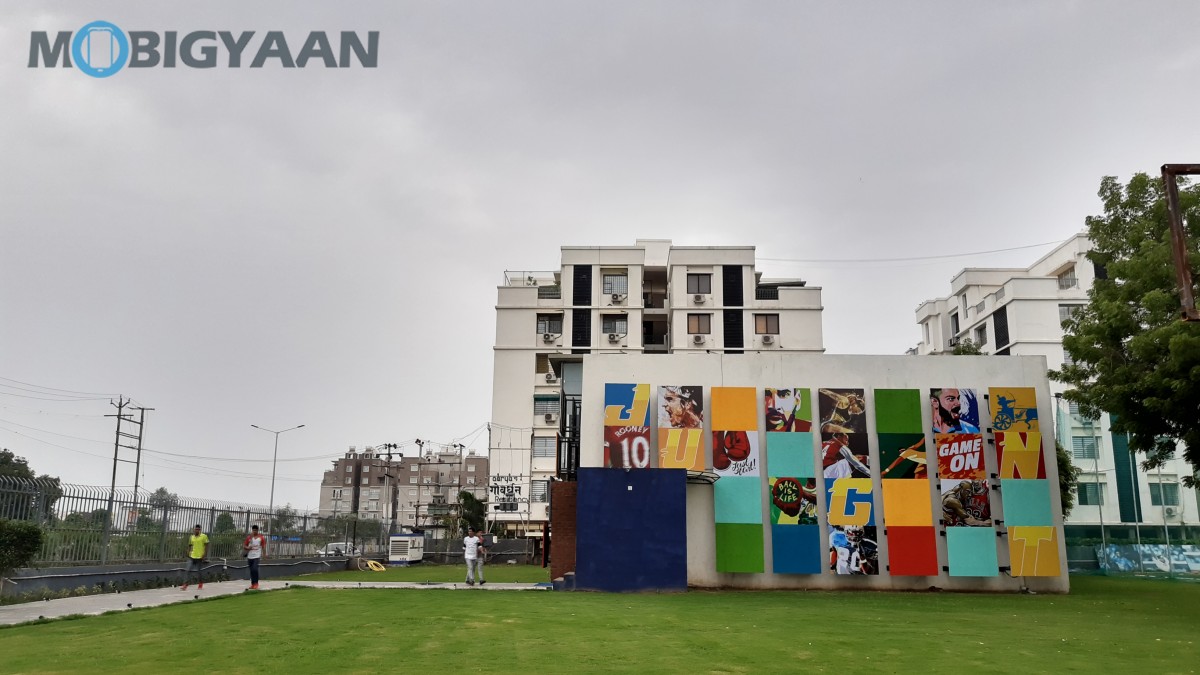


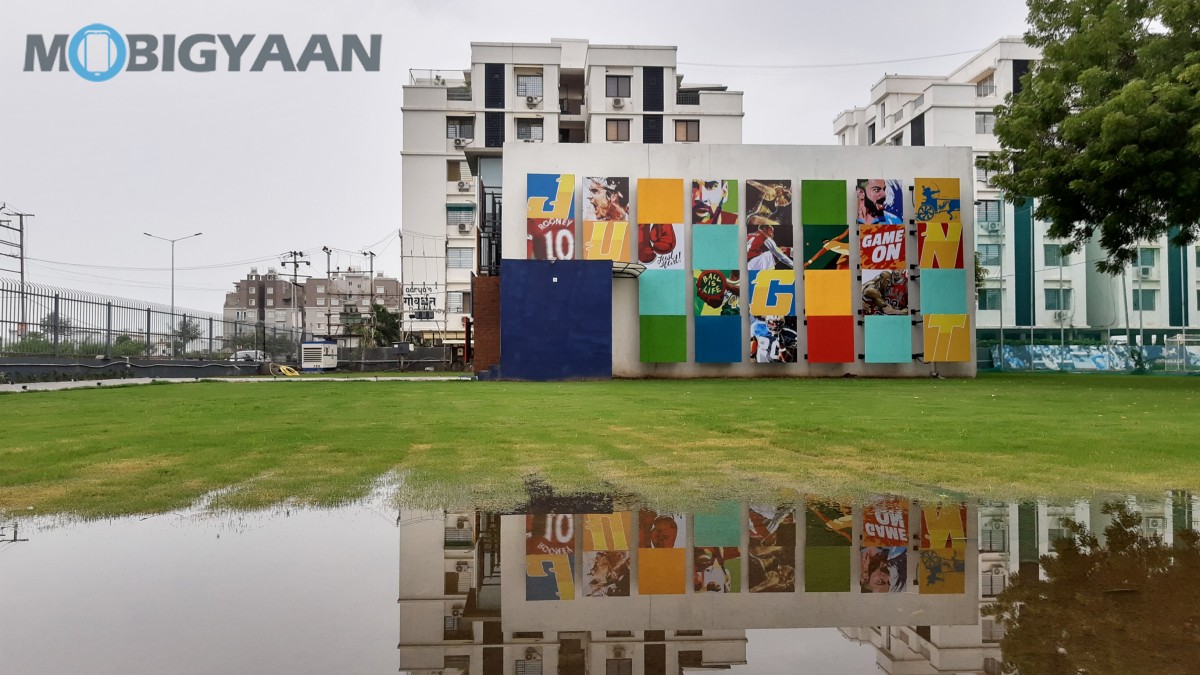
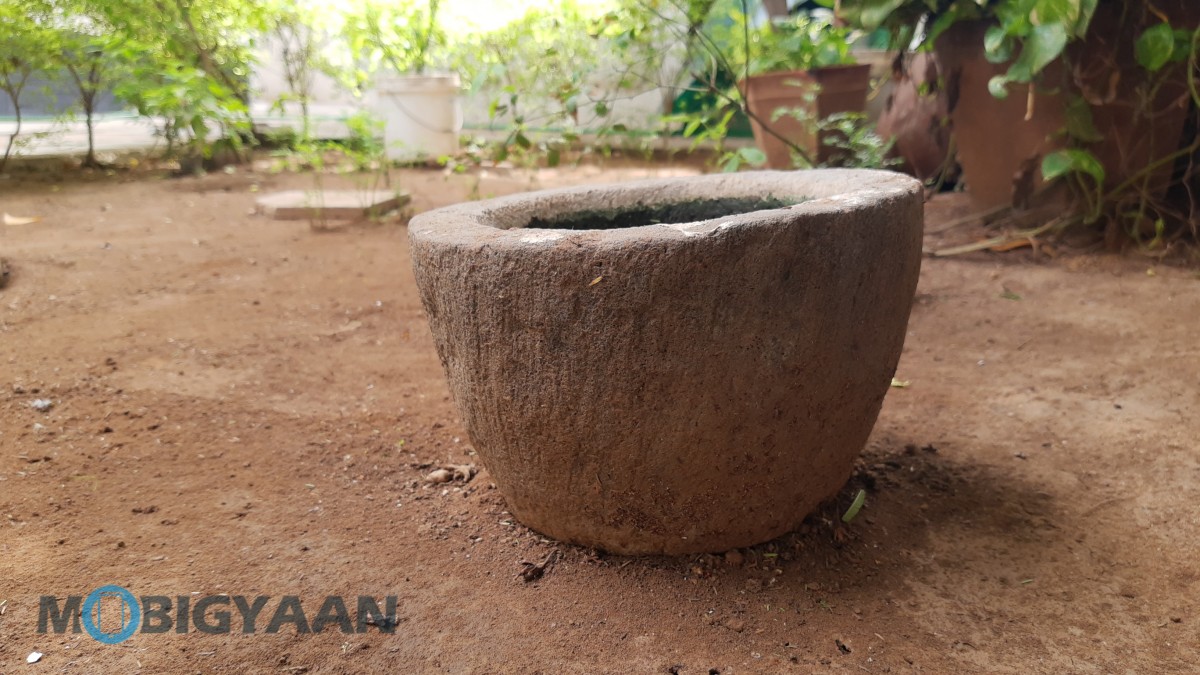
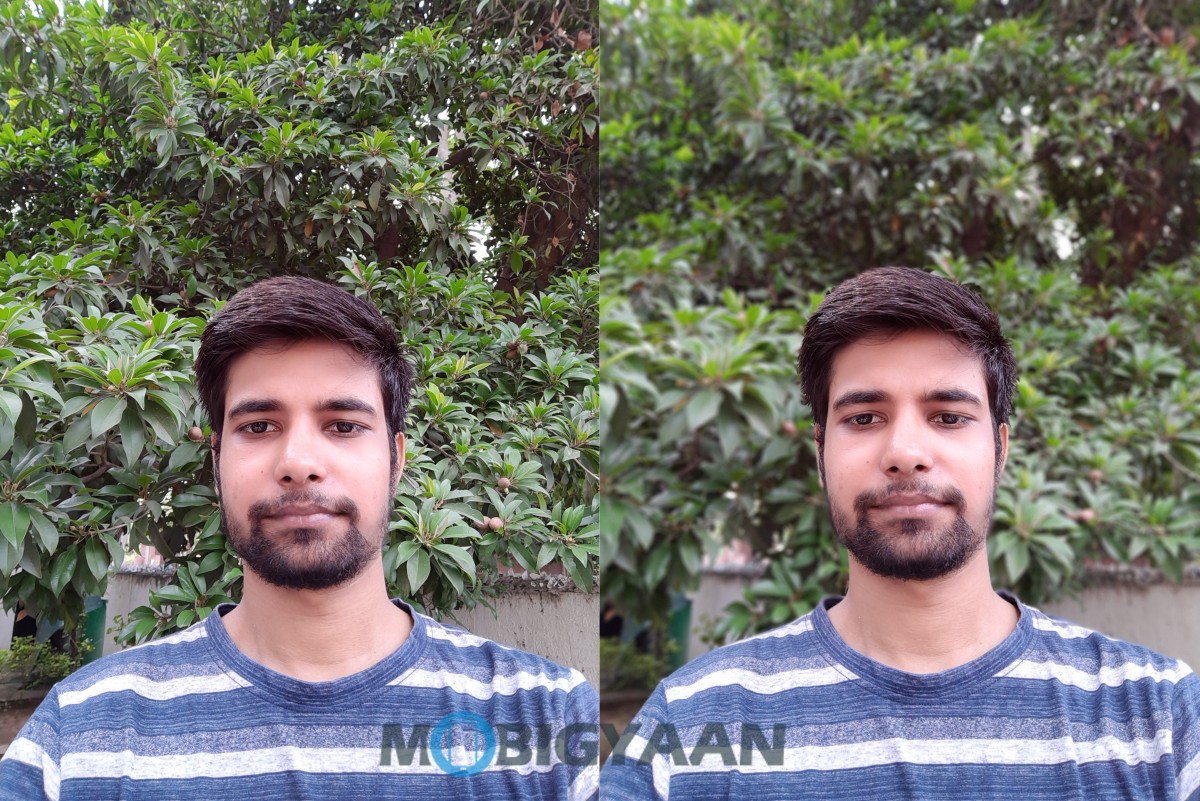
Software
The Motorola One Vision is running the stock version of Android 9 Pie operating system out-of-the-box as the phone is an Android One device. One of the reasons many users prefer the stock Android version instead of the custom OEM skin is the clean and bloat-free software. The stock Android is partly the reason for the phone’s good performance.
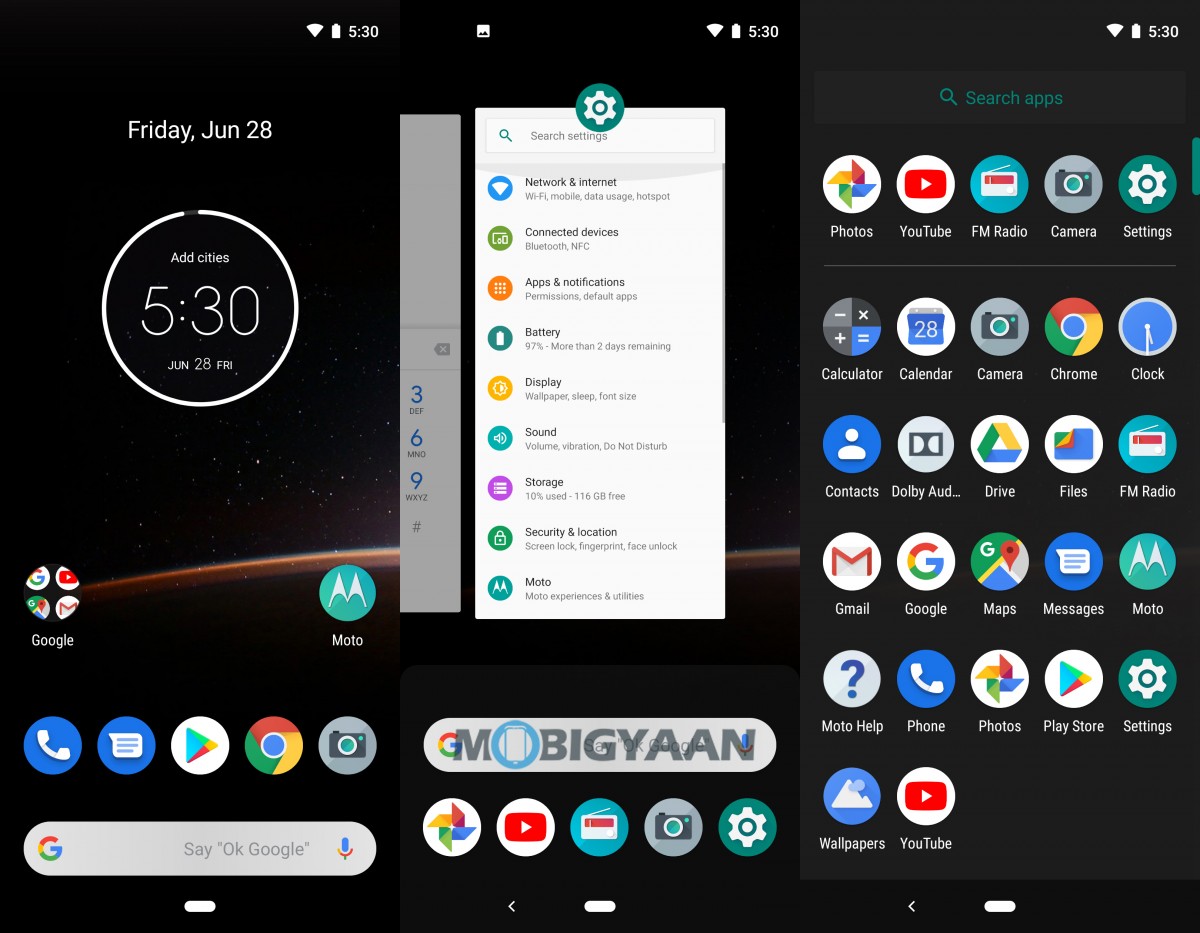
The company has already confirmed that the Motorola One Vision will be getting the Android Q update as well as the Android R update. Further, the company has also promised security updates for two years.
Even though it’s running stock Android, the company has tweaked it to include some of its own apps, features, and customizations. It comes with a few additional apps such as Dolby Audio, FM Radio, Moto Help, etc.
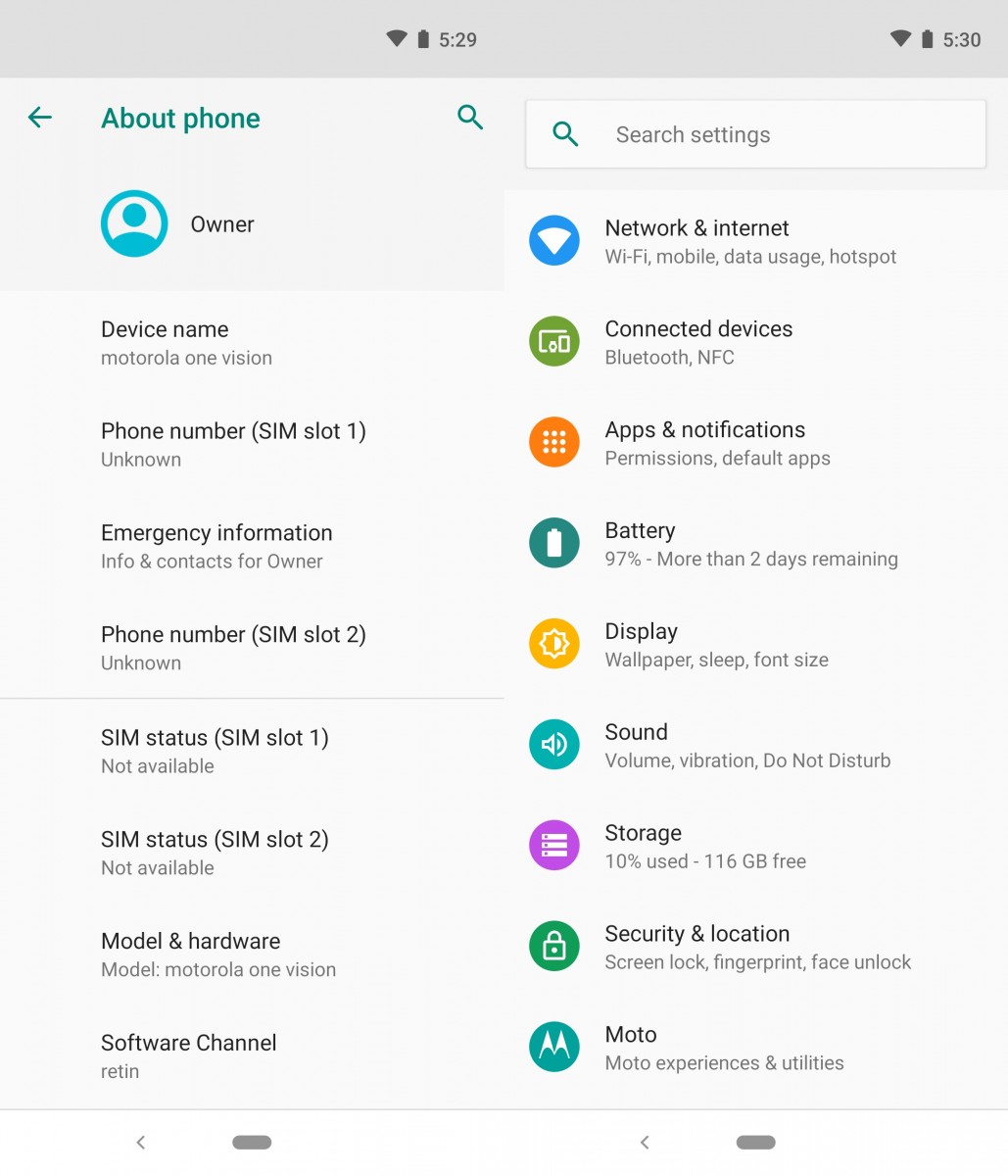
In the settings, the company has introduced a “Moto” category for the Moto Actions and Moto Display, which seems like the only notable addition in the otherwise stock Android. Apart from that, there’s nothing important worth noting in the software department given that it’s a fairly clean interface.
However, with Android Q to be available soon with features like system-wide dark mode and better gestures, the experience on the Motorola One Vision will be improved over time.
Battery and Others
The smartphone is powered by an average 3500 mAh battery which comes with support for 15W TurboPower fast charging technology.
With adaptive brightness on at all time, we managed about 5-6 hours of screen-on time with regular usage of apps such as Facebook, WhatsApp, Instagram, and Twitter. So, while the battery performance isn’t bad, it is not as good as the phone’s performance.
If you are a heavy user, you may not be able to get through the day without needing to charge the battery. However, it does come with fast charging support, which charges the phone fully in about 1.5 hours.
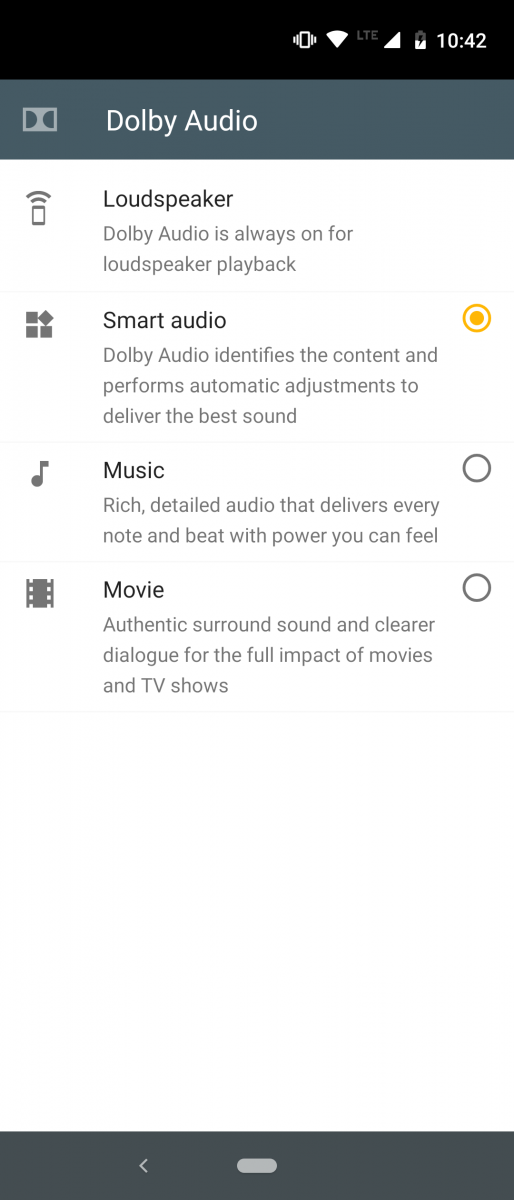
Coming to the audio, the phone comes with Dolby Audio tuning and the app lets you change between presets for music, film, and smart audio. It automatically adjusts the sound based on what you’re listening or watching. The speaker gets loud without distorting but the audio quality doesn’t seem to improve drastically.
Verdict
The Motorola One Vision stands out from the crowd as the phone is an Android One device, which is rare in this price segment. Nokia is the other brand that is still making Android One phones but is not as value-for-money as this one.
While the phone may look taller, it is quite easy to handle but yes, it may not be for everyone. It does offer good performance, a capable camera, clean and smooth software, and almost good battery life.
In short, if you don’t mind the taller 21:9 aspect ratio and a pretty big punch-hole in the top-left corner, you should go for it as the phone offers an overall good experience and is also priced good at Rs. 19,999 in India. It can be purchased exclusively through Flipkart.
